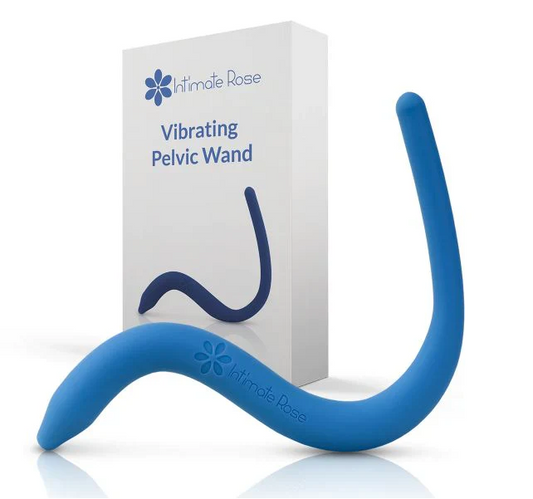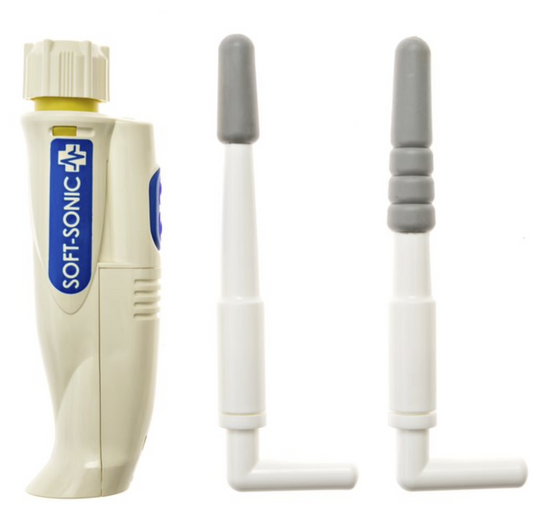
The Relationship Between Age and Prostate Size
Share
The prostate gland might be small but its impact on male health is significant. This muscular gland surrounds the urethra at the neck of the bladder and produces fluid that nourishes and protects sperm, forming a key component of semen.
However, as men age, their prostate naturally undergoes changes in size and function. Understanding these changes can help men recognize normal aging processes versus potential health concerns that require medical attention.
In this article, we’ll explore how prostate size changes with age, what’s considered normal, and when changes may signal a more serious issue.
Anatomy and Function of the Prostate
The prostate is a chestnut-shaped gland located just below the bladder and in front of the rectum. It surrounds the urethra, the tube that carries urine and semen out of the body.
While small in stature, the prostate performs several vital functions.
It produces about 25% to 30% of the fluid that makes up semen. This fluid contains enzymes, zinc, and citric acid that help protect and nourish sperm.
The muscular action of the prostate helps propel semen during ejaculation, playing a crucial role in reproductive function.
The prostate's strategic location wrapped around the urethra means that changes in its size directly affect urinary function, which is why prostate enlargement often causes urinary symptoms first.
This anatomical relationship explains why most men first notice prostate issues through changes in their urinary patterns rather than reproductive function.
Prostate Growth Across the Lifespan
The prostate's journey through a man's life follows a predictable pattern, though individual variations exist.
Infancy to Adolescence
During childhood, the prostate remains quite small, about the size of a pea.
As boys enter puberty, testosterone levels surge, triggering the prostate to grow. By the end of puberty, the prostate reaches its "adult" size of approximately 20 grams (about the size of a walnut).
This initial growth phase is normal and necessary for the development of reproductive function.
Young Adulthood
In young adult men between ages 20 to 30, the prostate typically weighs between 15-20 grams and has a volume of approximately 20-35 cubic centimeters (cc).
This size remains relatively stable throughout early adulthood, with minimal growth until around age 40. Medical professionals consider this the baseline "standard" size against which age-related changes are measured.
Middle Age and Beyond
After age 40, the prostate often begins a second growth phase.
Research from Yale Medicine shows that approximately 50% of men between ages 51-60 have benign prostatic hyperplasia (BPH), which is non-cancerous prostate enlargement.This percentage jumps to over 70% for men in their 60s and approximately 80% for men over 70.
By age 60, many men's prostates have grown to roughly 40 grams, and by age 80, some prostates can reach 50-100 grams, nearly four times their original size.
This growth typically occurs in the transition zone that surrounds the urethra, which explains why urinary symptoms become increasingly common with age.
Prostate Size Chart by Age
Understanding average prostate sizes can help contextualize individual variations:
|
Age Range |
Average Prostate Size (grams) |
Average Volume (cc) |
|
20-30 |
20-25 |
20-30 |
|
31-40 |
25-30 |
25-35 |
|
41-50 |
30-35 |
30-40 |
|
51-60 |
35-45 |
35-50 |
|
61-70 |
40-50 |
40-60 |
|
71-80 |
45-60 |
45-70 |
|
80+ |
50-70 |
50-80 |
It's important to note that these are averages, and substantial variations exist based on genetics, ethnicity, and lifestyle factors.
For instance, research from the South-Kivu province in the Democratic Republic of Congo reported that the Lega ethnic group had a median prostate volume of 55 cc, significantly larger than the Havu group's median of 20 cc.
Additionally, a study in Nigeria found that the mean prostate volume among their participants was 87.9 mL, higher than the averages reported for Caucasians (43.7 mL) and Asians (36.9 mL)
Additionally, prostate size is typically measured in either grams (weight) or cubic centimeters/milliliters (volume), with the two measurements being roughly equivalent as the prostate's density is close to that of water.
Medical professionals often use transrectal ultrasound to obtain these measurements, which provides a more accurate assessment than digital rectal examination alone.
What are the Factors Influencing Prostate Size?
Several factors beyond age can influence prostate size:
Hormonal Factors
Testosterone and its derivative dihydrotestosterone (DHT) play crucial roles in prostate growth.
Throughout life, testosterone is converted to DHT by an enzyme called 5-alpha-reductase. DHT binds to cells in the prostate, stimulating growth.
As men age, hormone levels fluctuate, but the prostate's sensitivity to these hormones often increases.
This hormonal mechanism explains why medications that block 5-alpha-reductase (such as finasteride and dutasteride) can effectively reduce prostate size and relieve symptoms of enlargement.
These medications work by preventing testosterone conversion to DHT, thereby limiting its growth-stimulating effects on the prostate tissue.
Genetic Factors
A study published in Cancer Epidemiology, Biomarkers & Prevention found that men with a family history of prostate cancer had a 68% increased risk of developing the disease compared to those without such a history.
Genetic factors influence not just whether a man will develop prostate enlargement, but also how early it might begin and how rapidly it might progress.
Moreover, a study involving over 44,000 twin pairs from Scandinavian countries found that the concordance rate for prostate cancer was 21% among identical twins, compared to 6% among fraternal twins.
This suggests a substantial genetic influence on prostate cancer risk.
Lifestyle Factors
Diet and physical activity levels have substantial impacts on prostate health. High-fat diets may increase inflammation and promote prostate growth through various metabolic pathways.
A meta-analysis published in Urology found a positive association between BMI and the risk of BPH and lower urinary tract symptoms (LUTS), with an odds ratio of 1.27 (95% CI: 1.05–1.53) for higher BMI groups compared to those with normal BMI .
Scientists believe this connection exists because excess adipose tissue alters hormone metabolism, increasing estrogen levels which may interact with testosterone to promote prostate growth.
What Prostate Size is Considered to be Dangerous?
The danger of an enlarged prostate isn't solely determined by its size but by the complications it causes to the urinary system. However, a prostate size of 30 cc or more can increase the likelihood of bothersome urinary symptoms.
Complications like acute or chronic urinary retention, UTIs, bladder damage, and kidney issues are what make an enlarged prostate dangerous.
Signs and Symptoms of an Enlarged Prostate
An enlarged prostate, also known as benign prostatic hyperplasia (BPH), is a common condition in older men where the prostate gland grows larger and can cause urinary problems.
The signs and symptoms can vary in severity but often include:
- Frequent urge to urinate
- Increased nighttime urination (Nocturia)
- Urinary Urgency
- Difficulty starting urination
- Weak urine stream
- Intermittent urine stream
- Dribbling at the end of urination
- Feeling of incomplete bladder emptying
- Straining to urinate
- Blood in the urine
While symptoms can range from mild to severe, it's important to consult a healthcare professional if you experience any persistent or concerning urinary issues.
Early diagnosis and treatment can help manage symptoms and prevent complications.
Treatment for Enlarged Prostate
When your prostate grows larger than normal, it can cause bothersome urinary symptoms. Fortunately, several treatment options are available, ranging from simple lifestyle changes to medication and surgery.
Watchful Waiting
If your symptoms are mild and don't significantly affect your daily life, your doctor might recommend simply monitoring your condition without immediate treatment.
About one-third of men with mild BPH symptoms find their symptoms remain stable or even improve without intervention.
Lifestyle Changes
Simple adjustments to your daily habits can often provide relief:
- Limit fluids in the evening, especially within 2 hours of bedtime
- Reduce consumption of alcohol, caffeine, and spicy foods
- Practice double voiding (urinate, wait a moment, then try again)
- Schedule regular bathroom breaks rather than waiting until urgency occurs
- Incorporate pelvic floor muscle training (also known as Kegel exercises)
- Use a Kegel training device to ensure you're activating the correct muscles consistently
Medications
When symptoms require treatment, medications are usually tried first:
- Alpha Blockers like tamsulosin (Flomax) relax the muscles in your prostate and bladder neck, making urination easier. They work quickly, often within days or weeks, but don't shrink the prostate. Side effects may include dizziness and changes in ejaculation.
- 5-Alpha Reductase Inhibitors such as finasteride (Proscar) and dutasteride (Avodart) actually shrink the prostate by blocking hormones that promote growth. These take several months to work but can reduce prostate size by 20-30%. Potential side effects include reduced sex drive and erectile difficulties.
For men with larger prostates and moderate-to-severe symptoms, doctors sometimes prescribe a combination of both medication types for better results.
Minimally Invasive Procedures
If medications aren't effective or cause troublesome side effects, several less invasive options exist:
- UroLift uses small implants to lift prostate tissue away from the urethra, creating a larger opening for urine flow. This office procedure preserves sexual function and has minimal recovery time.
- Rezūm Water Vapor Therapy uses steam to destroy excess prostate tissue. The procedure takes about 15-20 minutes, with symptom improvement lasting several years for most men.
- Prostate Laser Therapy uses various types of lasers to remove or vaporize prostate tissue blocking urine flow. These procedures typically cause less bleeding than traditional surgery.
Surgical Options
For severe enlargement or when other treatments fail, surgical intervention may be necessary:
- Transurethral Resection of the Prostate (TURP) remains the gold standard surgical treatment. A surgeon removes portions of the prostate through the urethra using special instruments.
- Open or Robotic Prostatectomy may be recommended for extremely large prostates. These more invasive surgeries remove a significant portion of the prostate through either traditional or minimally invasive robotic methods.
Prostate Massage Therapy
Prostate massage therapy represents one of the oldest and most direct methods for addressing prostate discomfort and promoting overall prostate wellness.
When performed properly, prostate massage offers several compelling benefits that many men find transformative for their quality of life:
- Releases built-up fluid pressure within the prostate, potentially providing immediate relief from fullness and discomfort
- Enhances blood circulation to nourish prostate tissues and support natural healing processes
- May help flush out stagnant secretions that contribute to inflammation and enlargement
- Creates a notable sensation of relaxation in the entire pelvic region that many users describe as "releasing a valve"
Today's sonic prostate massagers make this therapeutic approach more accessible and effective than ever before.
Take Control of Your Prostate Health Today
Treatment for an enlarged prostate should be personalized based on your symptoms, prostate size, health, and preferences. The good news is there are more options than ever—many offering good results with fewer side effects.
While medications and procedures are still the main treatments, lifestyle changes and techniques like prostate massage may also help some men feel better.
Ready to take control of your prostate health? Explore our best-selling sonic prostate massager and experience the difference for yourself.




